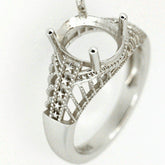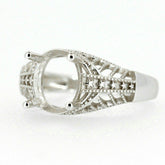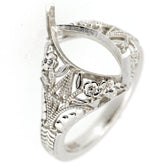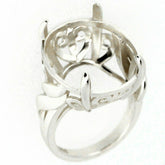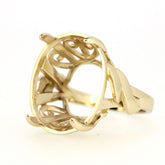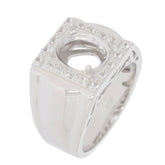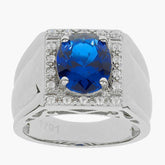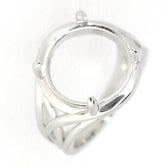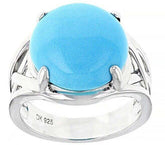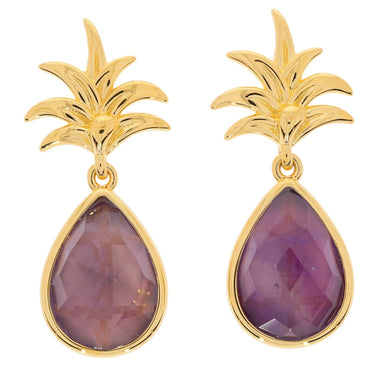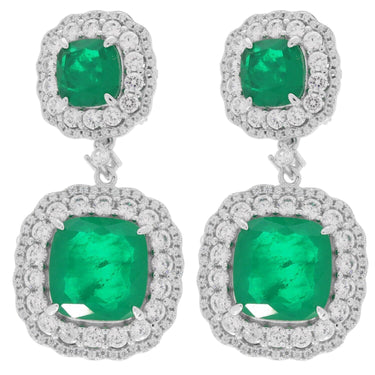Остаточний посібник з вибору правильного воску для лиття за втраченим воском
Вступ до втраченої воскової виливки та вибору воску

Чи коли-небудь ви замислювалися, чому віск для виливки ювелірних виробів грає таку важливу роль у покращенні проектів втраченої воскової виливки? Як ювелір, я зрозумів, що опанування вибору воску для втраченої воскової виливки — це набагато більше, ніж просто вибір матеріалу. У своїй основі втрачена воскова виливка — це давня техніка, яка дозволяє майстрам перетворювати уяву на складні носильні твори мистецтва. Створюючи ідеальну воскову модель, ретельно запаковуючи її в форму та потім розплавляючи віск, щоб залити розплавлений метал, ви можете зберегти навіть найдрібніші художні деталі.
Але ось секрет: якість та тип воску для втраченої воскової виливки безпосередньо впливають на чіткість вашого кінцевого дизайну. Гнучкі варіанти, такі як мікрокристалічний віск, дозволяють легко маніпулювати, даючи можливість вивести чіткі лінії та плавні криві. Вибір найкращих типів воску для виливки безумовно формуватиме ваші результати, вирішуючи, чи буде фініш чітким, легким для вирізання та професійним.
Основні типи воску для втраченої воскової виливки

Якщо ви починаєте працювати з віском для втраченої воскової виливки, ви швидко зрозумієте, що віск існує в кількох різних формах — кожна з яких має свої переваги. Давайте розглянемо найкращі типи воску для виливки і побачимо, які з них підходять для ваших творчих цілей:
- Тверда віск: Цей віск виділяється своєю твердністю та здатністю зберігати детальні особливості. Коли мені потрібно створити майстерні шаблони, які вимагають точності та стабільності під час багаторазового оброблення, твердий віск є моїм вибором. Він стійкий до дотику та вм’ятин, тому ви можете вирізати волосиноподібні лінії або структурні краї без страху деформації. Твердий віск часто використовують для унікальних проектів, де важлива міцність.
- М’який віск: якщо ваші дизайни мають органічний характер — уявіть собі плавні текстури, пелюстки або м’які контури — м’який віск може стати вашим улюбленим інструментом. Завдяки своїй пластичності він ідеально підходить для формування фігур при кімнатній температурі або коли руки втомлюються від роботи з жорсткішими матеріалами. Я часто використовую м’який віск для ескізування ідей у 3D або швидкого формування простих моделей перед їх подальшим удосконаленням.
- Інжекційний віск: для великомасштабного виробництва інжекційний віск — справжній порятунок. Він розроблений так, щоб плавитися і вводитися у форми з постійно точною якістю. Якщо ви хочете відтворення з мінімальними втратами деталей у сотнях однакових виробів, це саме той віск, у який варто інвестувати. Його формула орієнтована на текучість і легкість вилучення з форми.
Кожен варіант безпосередньо пов’язаний зі складністю, обсягом і тонкими вимогами ваших ювелірних дизайнів. Приділення часу розумінню цих відмінностей є ключем до успішного вибору литтєвого воску.
Твердий проти м’якого воску: вибір правильного типу

Вдалий вибір литтєвого воску часто означає зважування переваг і недоліків твердого та м’якого воску. На моєму досвіді, твердий віск ідеально підходить для тонких, складних деталей. Його жорстка структура дозволяє вирізати гострі краї, тонкі профілі та навіть порожнисті форми без ризику випадкового руйнування чи деформації. До того ж він менше прилипає до рук — тож ви витратите більше часу на скульптуру і менше на прибирання. Однак твердий віск може бути трохи дорожчим і вимагає обережного підходу, оскільки швидко зроблені помилки важче виправити.
М’який віск, навпаки, найкраще підходить для покриття більших поверхонь або коли потрібна швидкість. Він більш гнучкий, легко піддається формуванню і швидко створює плавні вигини. Проте ця ж гнучкість означає, що він може провисати або втрачати структуру, якщо працювати з ним занадто тонко — тому точність не є його головною перевагою. Я рекомендую м’який віск, коли ваш дизайн не вимагає надзвичайної деталізації або якщо ви хочете прототипувати органічні форми перед тим, як закріпити свою ідею у твердому воску.
Зрештою, ваш вибір залежить від вимог до деталей проєкту, складності форми та ваших власних уподобань у роботі. Не бійтеся експериментувати з твердим і м’яким воском на практичних зразках, доки не наберетеся впевненості у виборі литтєвого воску для ювелірних виробів.
Основні інструменти для різьблення та лиття воску

Протягом років я зрозумів, що зібрати правильний набір інструментів необхідно для створення якісних воскових моделей. Ось огляд того, що вам знадобиться — чи ви початківець-аматор, чи прагнете професійних стандартів з найкращими типами литтєвого воску:
- Інструменти для різьблення по воску: від плоских і округлих кінцівок до ультратонких наконечників, ці ручні інструменти точно вирізають, згладжують і надають текстуру воску.
- Ювелірна пилка зі спіральними восковими лезами: Ці спеціалізовані пилки дозволяють різати воскові листи, трубки та блоки з мінімальним забиванням.
- Воскові напилки: Грубіші та гостріші за металеві аналоги, воскові напилки допомагають формувати і вдосконалювати вашу модель перед інвестуванням.
- Скальпелі або ремісничі ножі: Ідеальні для маленьких розрізів, складного гравіювання або вирізання делікатних форм.
- Дрилі та борфрези: Чи готуєте ви посадкове місце для каменю, чи порожнисту частину, ці ротаційні насадки забезпечують універсальність і швидкість.
- Інструменти для обслуговування: Дротові щітки та сталевий ватин запобігають накопиченню воску на ваших інструментах і підтримують їх гостроту. Також рекомендую засоби захисту — завжди носіть захисні окуляри і, якщо можливо, маску під час шліфування або свердління воску.
Інвестиції у якісні інструменти та вивчення базових процедур обслуговування дуже вигідні — правильне обладнання запобігає розчаруванням і прокладає шлях до високоточних результатів.
Розуміння властивостей воску та їх вплив на лиття

Кожен успішний проект лиття ювелірних виробів залежить від того, наскільки добре ви розумієте приховані характеристики вашого воску для лиття. Я зрозумів, що навіть незначні фактори можуть суттєво вплинути на результат. Ось що варто памâятати:
- Температура плавлення: Для більшості проектів ви працюватимете з воском, що плавиться між 60°C і 93°C. Воски з нижчою температурою плавлення спрощують видалення воску — вони чисто виходять з форми, знижуючи ризик тріщин або дефектів у керамічній оболонці.
- Гнучкість: Коли я працюю з тонким філігранним візерунком або дуже тонкими лініями, більш гнучкий віск запобігає поломкам під час обробки або підвісок. Жорсткі воски, хоча й підходять для стабільних форм, можуть ламатися під навантаженням.
- Розмірна стабільність: Віск природно розширюється при нагріванні і стискається при охолодженні. Якщо не врахувати це, можна побачити деформації або погане прилягання — особливо у великих або багатокомпонентних виробах. Завжди тестуйте невеликий зразок перед створенням складного проекту.
- Склад: Воски відрізняються наповнювачами та сумішами; деякі призначені для переробки або спеціально для певних поверхневих оздоблень. Вибір суміші, що відповідає вашим технічним потребам, допомагає забезпечити послідовність — ознаку професійних результатів.
Розуміння цих фізичних властивостей дозволяє краще вибирати віск для лиття за втраченим воском. Враховуючи температуру плавлення, пластичність і складові, ви зможете впевнено обирати віск для кожного нового проекту.
Покроковий посібник з процесу лиття за втраченим воском

Я памâятаю свâй перший повний процес лиття за втраченим воском — нâчого не зрівнятися з очікуванням, коли нарешті розбиваєш форму і відкриваєш свій литий металевий виріб. Для тих, хто лише починає свій шлях, ось мій покроковий розбір для бездоганних результатів з використанням правильного воску для лиття ювелірних виробів:
- Різьба вашої воскової моделі: Використовуйте обраний віск для лиття (для ювелірних виробів обирайте тип, що відповідає бажаній формі та деталізації) для створення основного дизайну. Не поспішайте — воскова модель має лише один шанс на досконалість!
- Приєднання литників: Приєднайте литники до найтовстіших частин вашої воскової моделі. Ці «шляхи втечі» допомагають розплавленому металу проникати всередину, а повітрю виходити назовні.
- Заливка моделі: Помістіть восковий виріб у колбу і залийте суміш інвестиційного порошку. Дайте затвердіти — це утворює міцну, вогнетривку керамічну оболонку навколо воску.
- Випалювання: Обережно нагрійте колбу в печі, щоб плавно розплавити і видалити віск, залишаючи порожню форму. Дайте додатковий час, щоб переконатися, що всі сліди зникли.
- Заливка металу: Розплавте свій металевий сплав (срібло, золото або бронзу) і влийте його у підготовлену форму через литник. Будьте обережні — точність тут забезпечує чисте лиття.
- Охолодження та обробка: Дайте формі та металу повністю охолонути. Зніміть керамічну оболонку, щоб побачити свій виріб, і завершіть, обрізаючи литники, поліруючи та додаючи фінальні штрихи.
Дотримуючись цих кроків, ви зможете перетворити восковий ескіз на довговічний скарб. Пам’ятайте, фізичні властивості воску важливі на кожному етапі — тому розумний вибір воску для лиття за втраченим воском є ключем до успіху.
Поради для початківців у різьбі та литті воску

Усі ми починаємо з чогось! Якщо ви тільки починаєте з лиття за втраченим воском, ось практичні поради, які я хотів би отримати:
- Починайте з простих форм і чітких планів дизайну — хочеться одразу перейти до складного, але повільні кроки будують впевненість.
- Обирайте типи воску, які легко обробляти — м’який віск для широких форм або простих кілець, твердий віск для детальної роботи.
- Спочатку використовуйте базові ручні інструменти: скальпелі, напилки та прості стоматологічні інструменти. Переходьте до Dremel або ротаційного інструменту лише після того, як наберетеся досвіду ручного контролю.
- Підтримуйте рівномірну товщину воску (1-2 мм) для стабільності під час лиття — тонкі стінки можуть тріскатися або деформуватися.
- Практикуйте нанесення напрямних безпосередньо на віск; точність зростає, а розчарування зменшується.
- Якщо виникає проблема (так, віск може тріскатися!), будьте терплячі — іноді нагрівання воску робить дрібний ремонт легким.
Коли я відчуваю застій, я повертаюся до початкових уроків, беру участь у практичних майстер-класах або об’єднуюся з колегами-ювелірами. Немає кращої заміни, ніж спілкування з реальними людьми та навчання на спільних помилках і перемогах.
Просунуті техніки для професійних ювелірів

Для тих, хто прагне підняти своє мистецтво на новий рівень, дослідження просунутих підходів до вибору воску для втраченої воскової лиття та композиції ювелірних виробів є винагороджуючим викликом. Я вважаю особливо корисними такі шляхи:
- Гібридні дизайни: Поєднання різних матеріалів (метал, дорогоцінні камені, навіть нетрадиційні матеріали) дає унікальні, багатотекстурні результати. Експерименти приносять сюрпризи — іноді моя найоригінальніша робота починалася з «а що як?»
- Складні текстури: Включайте текстури та мікродеталі за допомогою різьблення, гравіювання або технік травлення поверхні, часто досягаючи рівнів деталізації, недоступних у традиційному виготовленні.
- Професійна установка каменів: Відпрацьовуйте складні техніки установки каменів, такі як паве або натяг. Взаємодія між майстерно відлитими восковими оправами та точно розміщеними каменями є ознакою ювелірних виробів найвищого класу.
- Завершення та полірування: Інвестуйте в якісні інструменти для фінішної обробки, щоб створювати дзеркальні полірування, матові поверхні або візерункові текстури — перетворюючи хороший виріб на чудовий.
Майстерність приходить через постійну практику, цікавість і готовність розширювати творчі межі, використовуючи найкращі типи воску для лиття та вдосконалені техніки.
Поширені запитання (FAQ)

1. Які найкращі типи воску для втраченої воскової лиття в ювелірній справі?
Найнадійніші варіанти — твердий віск (для детальних, міцних моделей), м’який віск (коли важлива гнучкість і органічні форми) та інжекційний віск для великосерійного виробництва.
2. Як обрати віск для втраченої воскової лиття, якщо я початківець?
Якщо ви тільки починаєте, використовуйте м’який віск або суміш з хорошою гнучкістю та помірною температурою плавлення. Вони легкі у використанні та прощають помилки. Зі зростанням навичок експериментуйте з твердим воском для підвищення точності.
3. Чи впливає вибір воску на результат лиття?
Абсолютно! Тип воску для лиття ювелірних виробів безпосередньо впливає на якість вашого готового виробу — деталі, гладкість поверхні та точність залежать від властивостей початкової моделі.
4. Чи можна змішувати типи воску для покращення результатів?
Так. Багато професіоналів змішують твердий і м’який віск, щоб поєднати їхні переваги та уникнути недоліків — налаштовуючи вибір воску для втраченої воскової лиття під кожен проєкт.
Висновок: досягайте вищої якості з правильним воском
Оволодіння вибором воску для втраченої воскової лиття є серцем кожного красивого ювелірного виробу — повірте, після років спроб і помилок я можу сказати, що немає коротких шляхів до досвіду! Приділіть час оцінці потреб вашого дизайну, експериментуйте з різними восками для лиття ювелірних виробів і не бійтеся розширювати свої творчі межі. Чи то ви шукаєте найкращі типи воску для лиття для делікатної каблучки, чи готуєтесь до повного виробничого циклу, ваша уважність тут закладає основу для приголомшливих результатів.
Готові перетворити свої креативні ідеї на приголомшливі ювелірні вироби професійної якості? Почніть оптимізувати свій віск для втраченої воскової лиття вже сьогодні. Для отримання більш професійних порад та покрокових інструкцій перегляньте наші ресурси або приєднуйтесь до нашої онлайн-спільноти — ми підтримуємо вас на кожному кроці вашої ювелірної подорожі!

